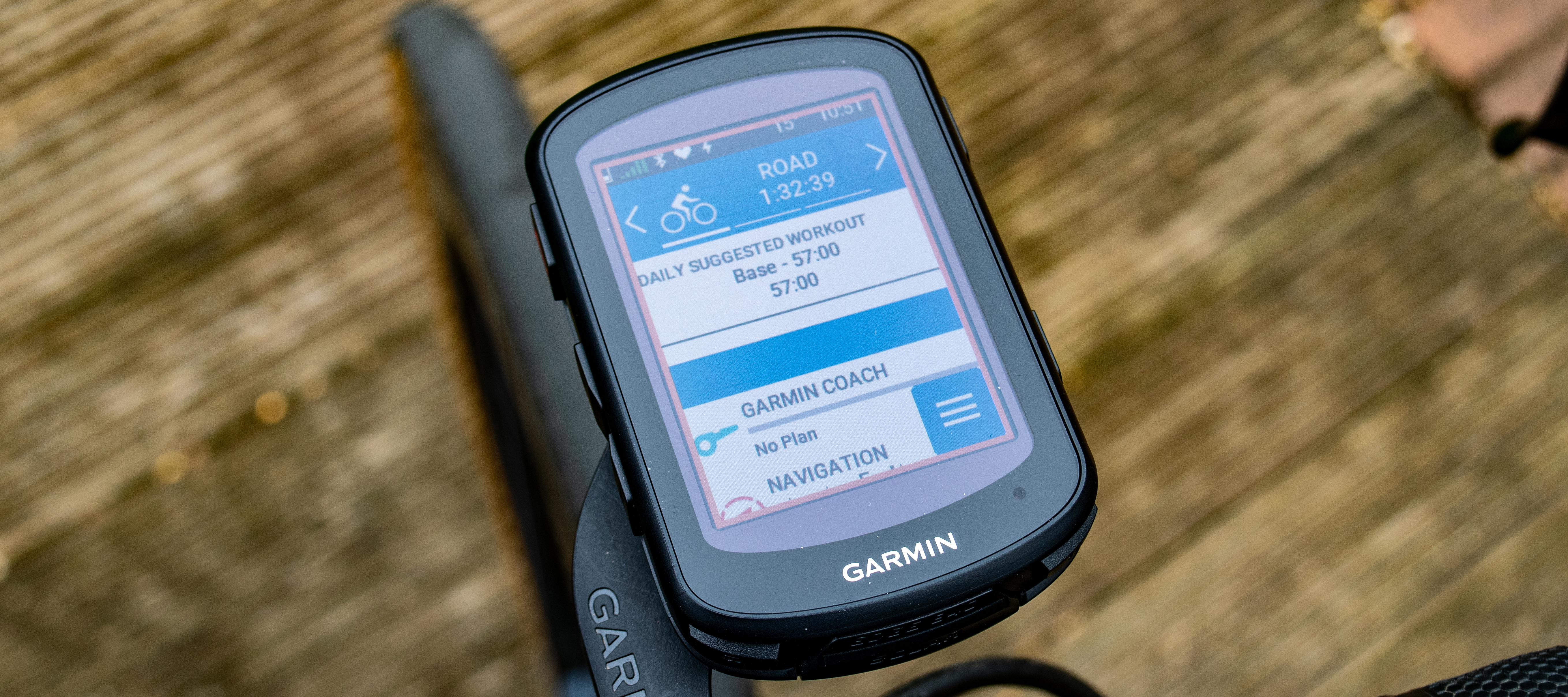Cyclingnews Verdict
The 840 Solar has every feature I need plus tonnes more contained in a compact package. But I haven't found the solar charging capability particularly useful for the length of rides I normally do or the climate at home
Pros
- +
Powerful, and packed with features
- +
Smaller size is refreshing compared to bigger units
- +
Good mapping and navigation
Cons
- -
Solar charging benefit and extra cost may not be worth it for some riders
You can trust Cyclingnews

Price: $499.99 / £449.99 / €549.99
Weight: 87 grams - actual
Screen Size: 2.6”
Memory: 32GB
Connectivity: ANT+ / Bluetooth / WIFI
Waterproof: IPX7
Battery life: Up to 32 hours
Garmin’s bike computer line is 10 units strong currently, and the models in it are generally regarded as some of the best bike computers on the market. From the entry-level 130 Plus up to the flagship Edge 1050 unit I finished reviewing in December last year.
I’ve turned my attention to another model this year, one that has escaped review by the Cyclingnews tech team so far. I have been riding with the third most expensive unit in the Garmin range, the Edge 840 Solar, one of two models that come with solar charging tech in the brand's lineup, the other being the Edge 1040 Solar. The Edge 540 Solar option was discontinued in the autumn of last year.
The Edge 840 Solar has been on the market for a few years now; Garmin officially launched it in April 2023. So, we are now nearly two years into its existence. Currently, the unit has an RRP of $499.99 / £449.99 / €549.99, which is slightly less than when it launched, according to our 840 Solar news piece.
Garmin packs an awful lot of wide-ranging features into its more premium units, and the Edge 840 Solar is no different, it also features solar charging tech which could be very useful for some riders and that is one of the unit's key calling cards. It’s also interestingly slightly less pricey than the latest top-end computers that have launched in the last year.
A look back at a model that's been on the market for a little while should help you decide what you need and if you need to spend top dollar on a unit, in particular one with solar charging tech.
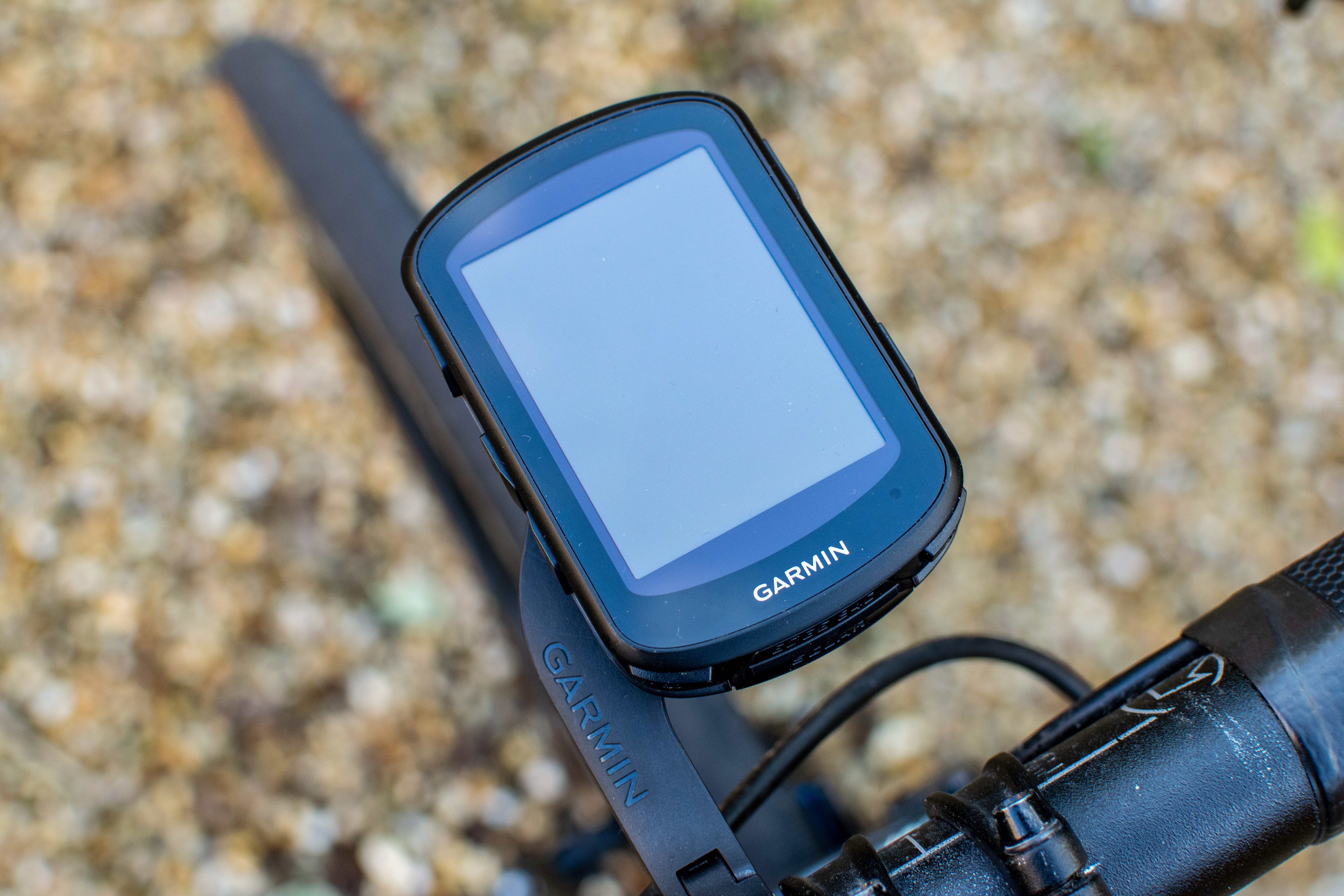
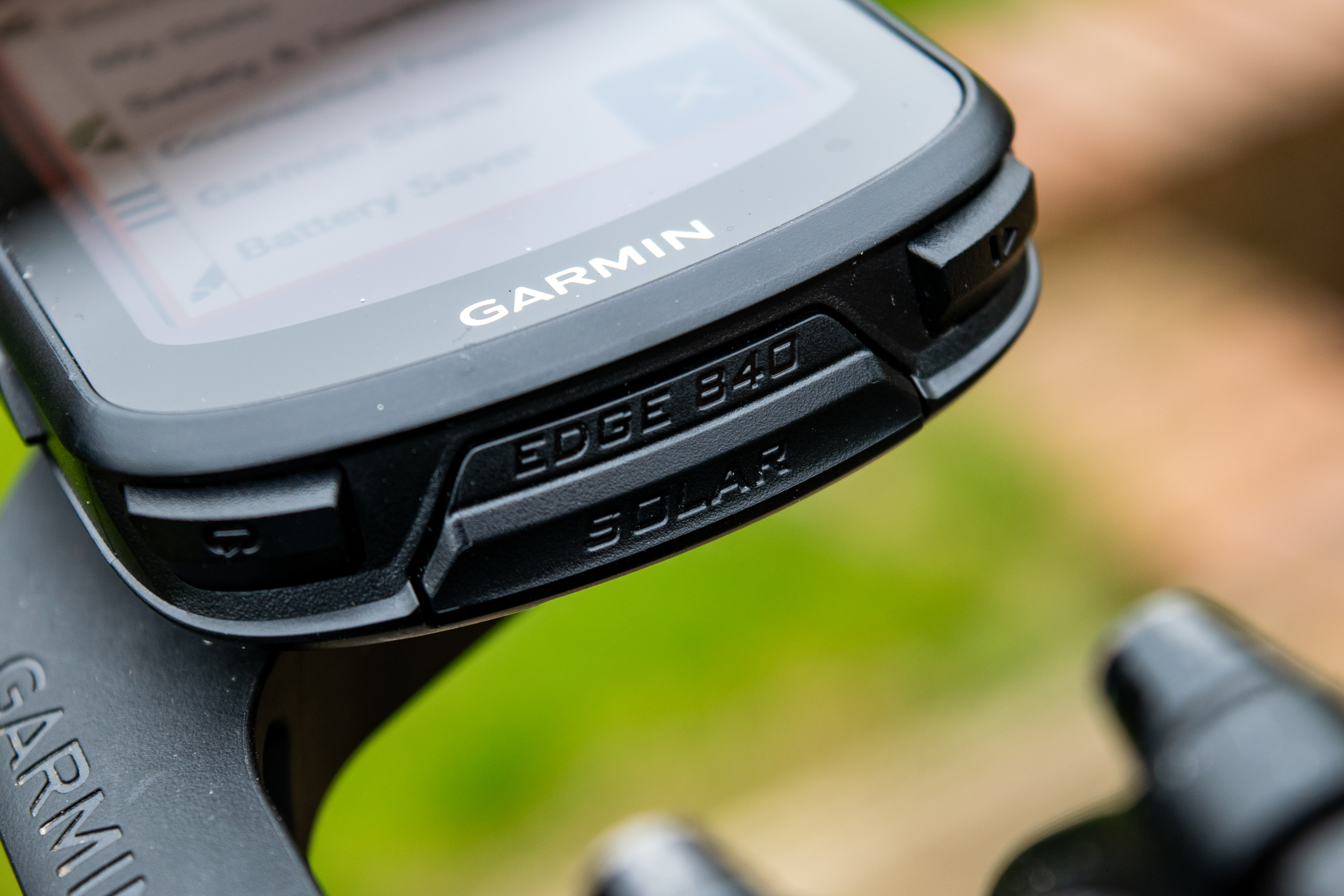
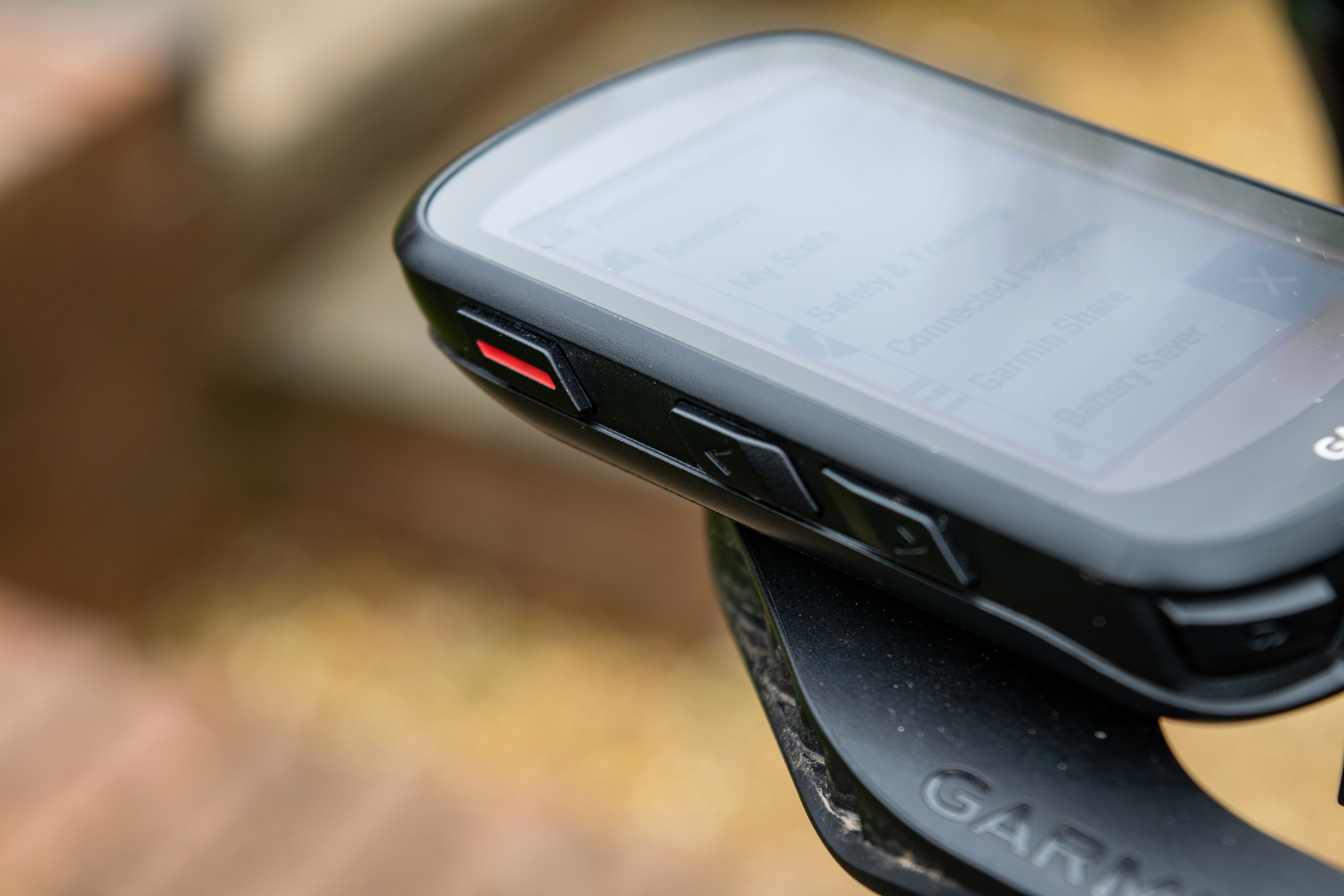
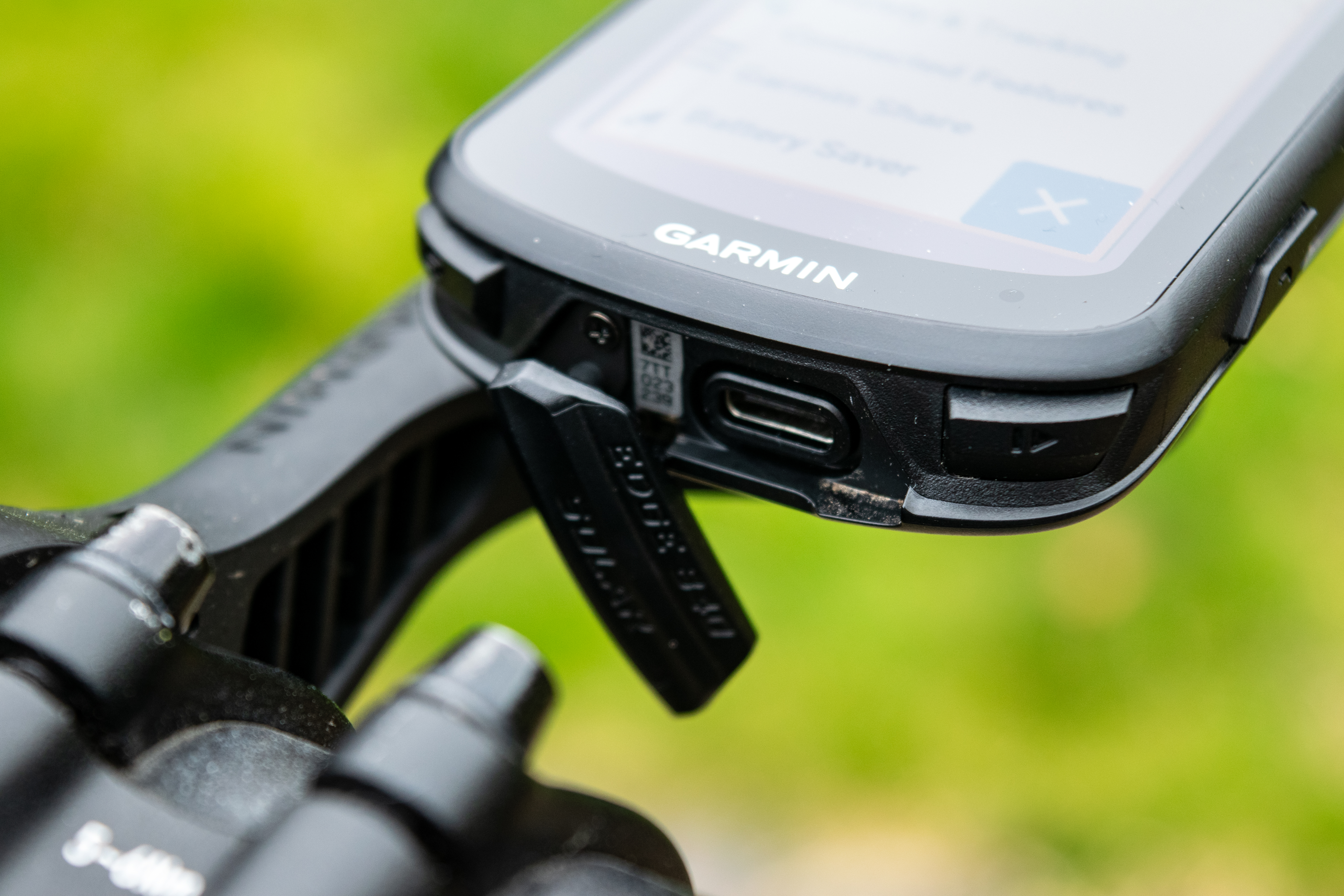
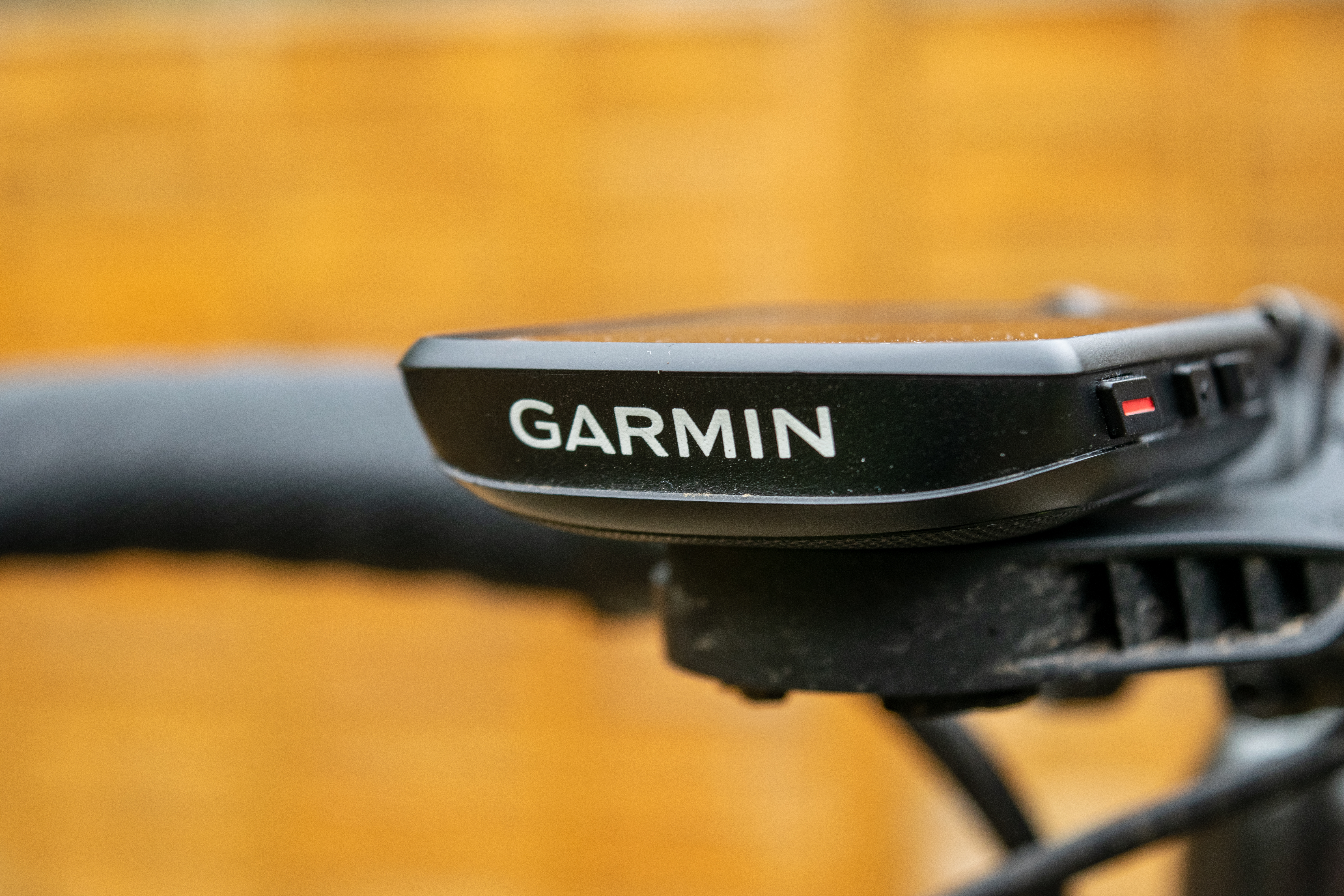

Design and aesthetics
The Edge 840 Solar comes with everything you need to get set up and ride in the box, the same as other Garmin units. There's a quality, Garmin out-front mount for round handlebars, a lanyard to tether the unit to the mount, a charger cable, manual and a regular O ring computer mount, useful if you are in a bind with an integrated handlebar which are more and more common these days.
It's a compact, stylish computer with a black finish and a bold white 'Garmin' wordmark on the front of the unit. Unit dimensions are 57.8 x 85.1 x 19.6 mm (2.3″ x 3.4″ x 0.8″) which makes it exactly the same size as the Edge 540. Though it's the same physical size as the 540, for the extra spend (which is over $100), you get a touch screen on the 840 and double the storage space for starters amongst some other extra features.
It's also smaller than other high-end rival units like the Hammerhead Karoo or Wahoo Roam, and a good bit smaller than the new Edge 1050. Possibly food for thought if you don't want a big computer on your handlebars. In particular, it makes for a stark contrast compared to the gigantic Wahoo Elemnt Ace that recently launched.
This is a solar model, which means the 840 receives built-in solar charging technology, an exciting prospect that could help increase the computer's battery charge and run times. The 840 Solar features Power Glass which 'converts sunlight into battery power'. Part of this tech can be seen with the red-coloured outer border of the computer's screen, which takes care of some of the charging. The intensity and amount of sunlight the unit is exposed to will determine the amount of charge, but you can also leave the unit in the sun switched off or asleep and it will charge, which is pretty cool.
The Garmin website claims 60 hours of battery life from a single charge whilst in a battery saver mode, and there's also a pretty useful battery life table to look at with more specific use case details. The run times however are more than enough for some very big rides if you need it. My personal record is about 15 hours and most computers can handle that now.
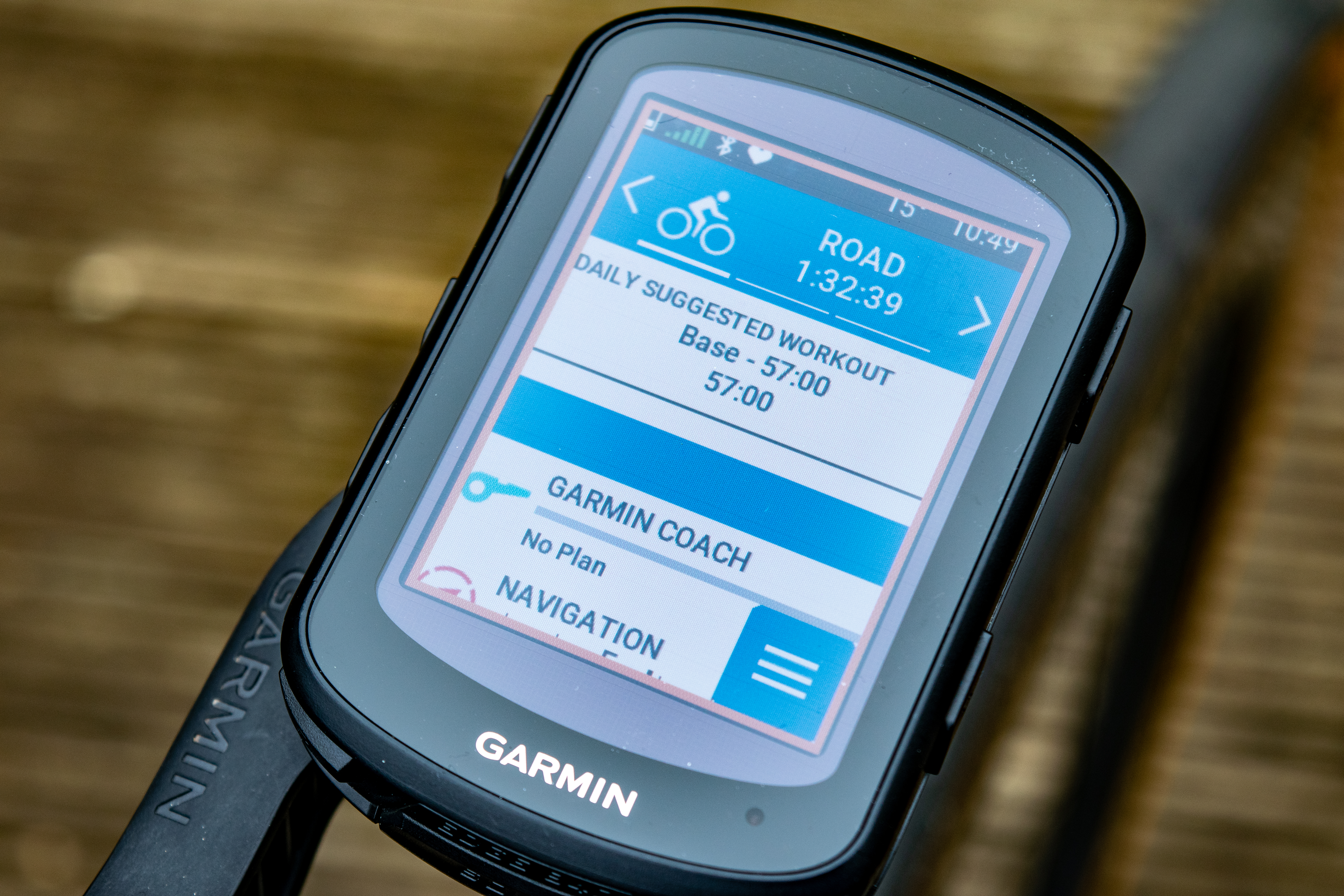
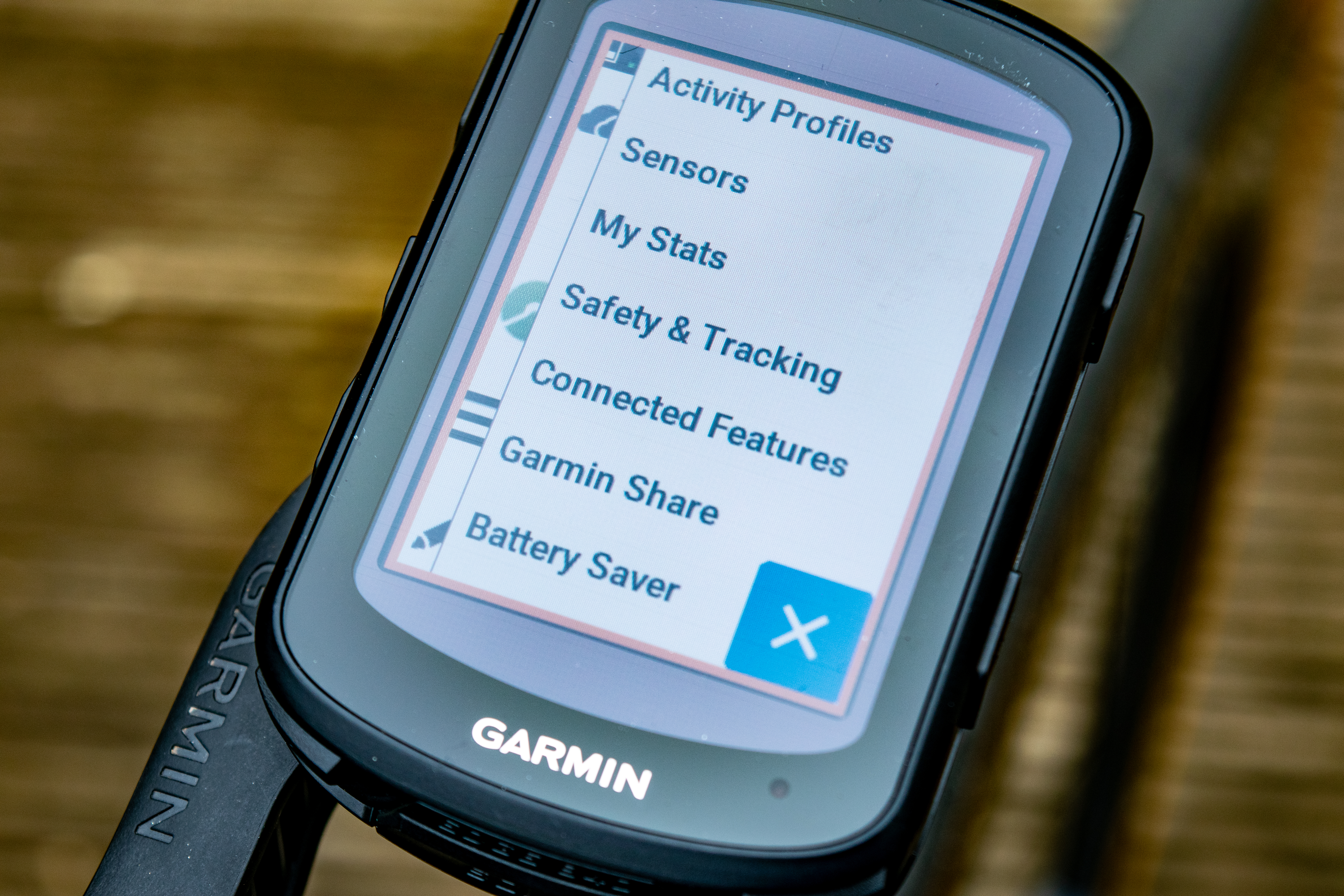

Aside from Solar charging, Garmin packs a lot into its Edge devices, I can't list it all here, but head to the specs page of the Garmin website where you can see a full spec breakdown of every feature the 840 Solar has.
Setup is very easy on computers these days, and I had no issues connecting my Garmin account and porting over my details, even if it makes me nervous every time. It's really simple, so don't worry on that score.
The unit has a touchscreen and seven buttons for things like scrolling through screens, starting rides and hitting lap etc. The touchscreen works very well, though the unit isn't as lightning-fast as the latest Edge 1050. I've found myself using the left-hand up and down buttons to scroll through data pages though whilst testing. It's a very nice easy movement for my left hand and I've been tending to do this of late, showing that a touchscreen isn't an absolute necessity.
You can customise data pages to your heart's content, there's so much to include or add. I like to sit down with a unit first and just get in tune with it on the sofa before I ride. I know what I generally want in terms of pages and data, but it's always good to get a feel for things and explore, especially with jam-packed Garmin units.
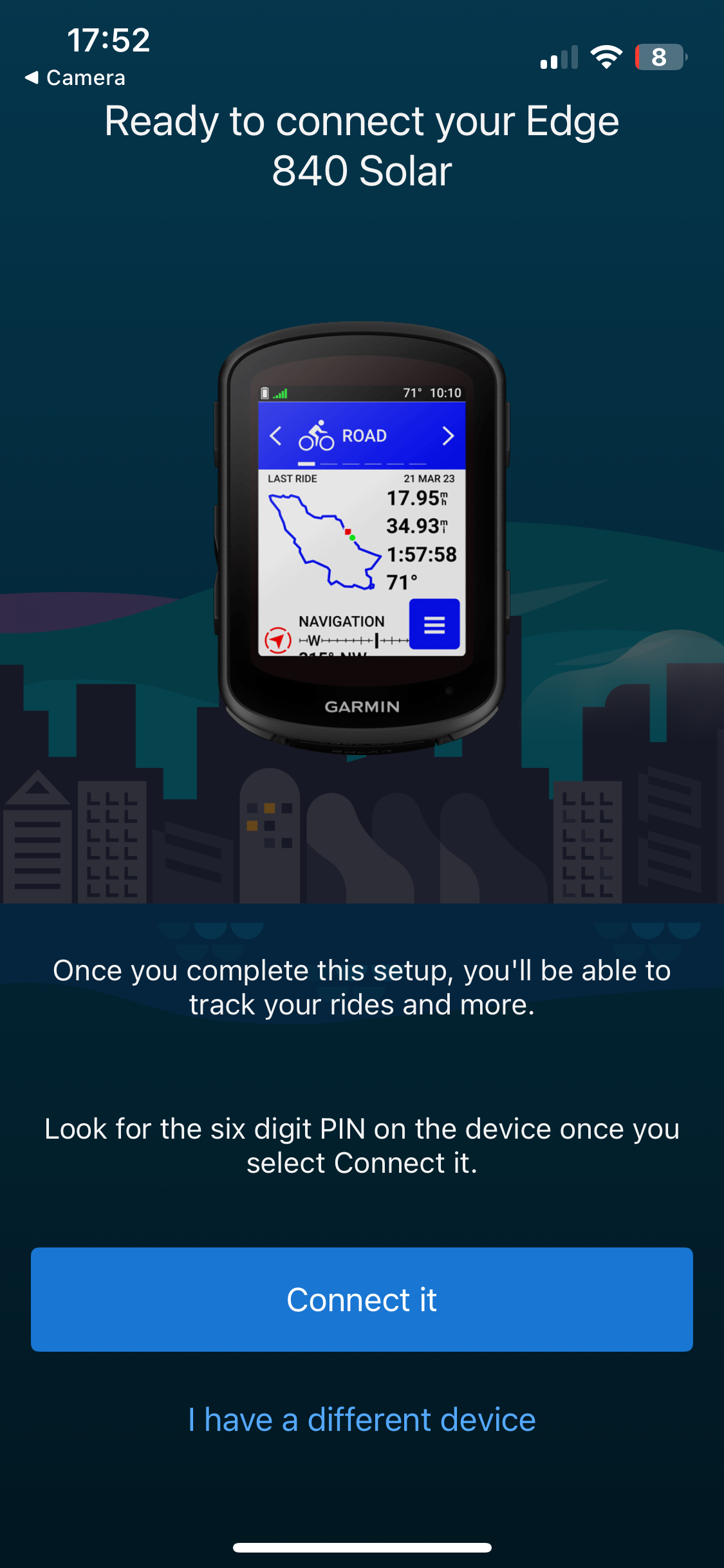
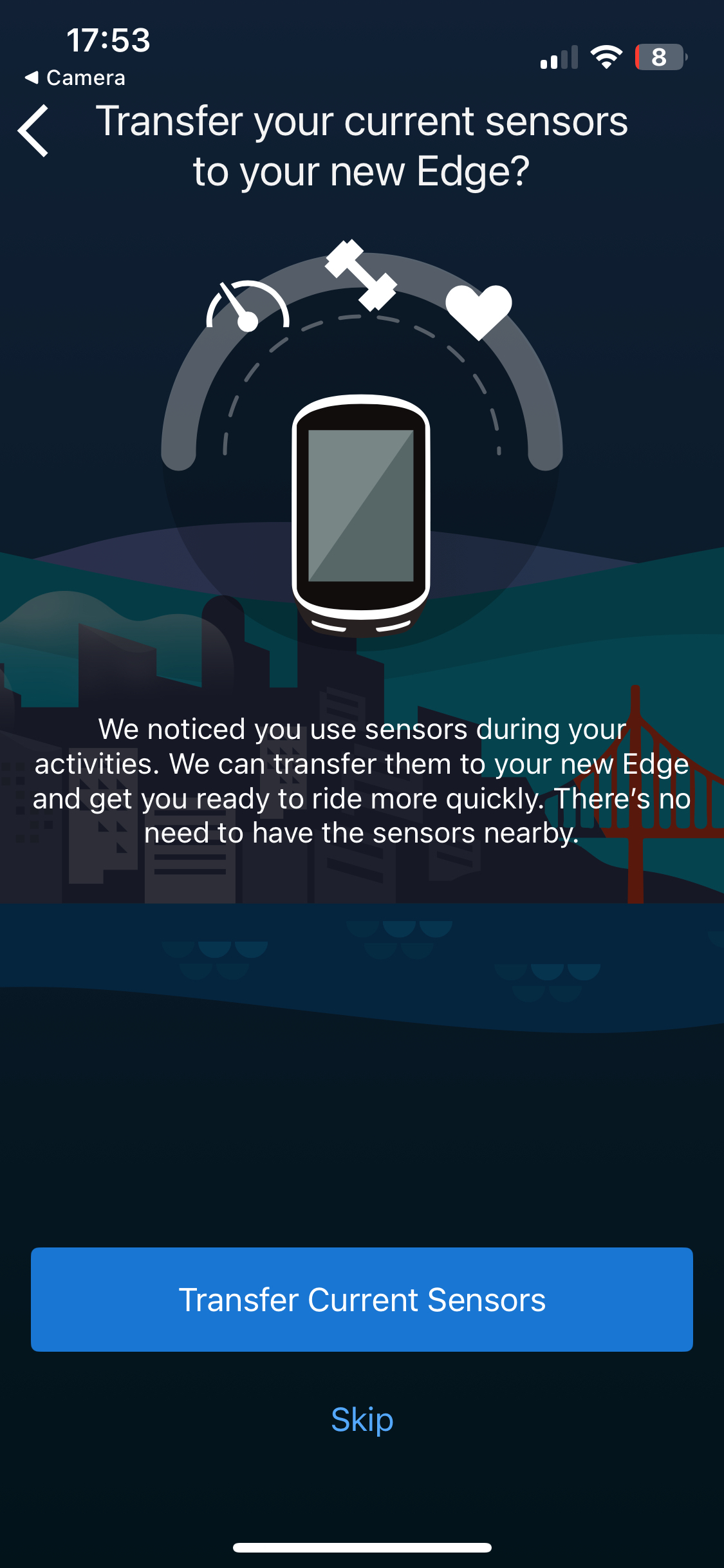
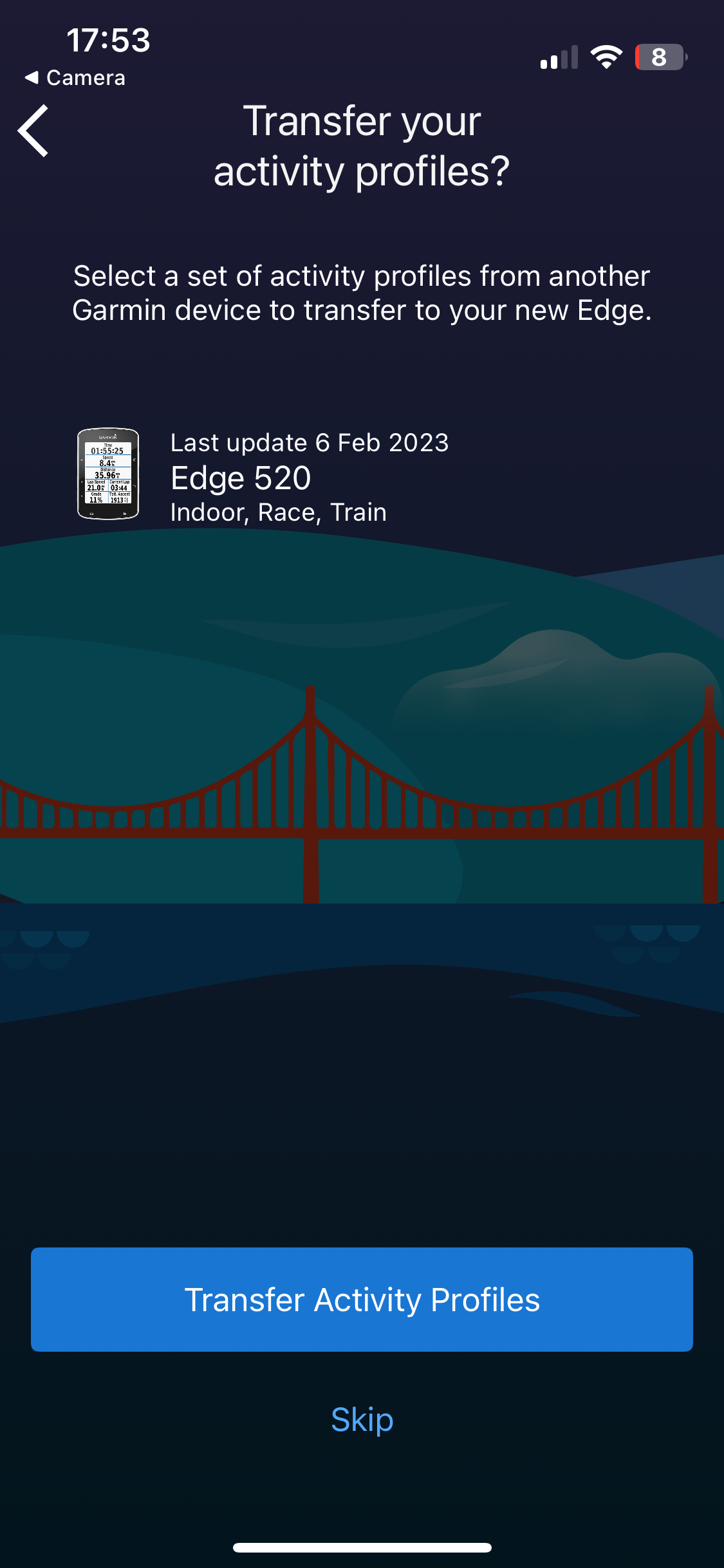
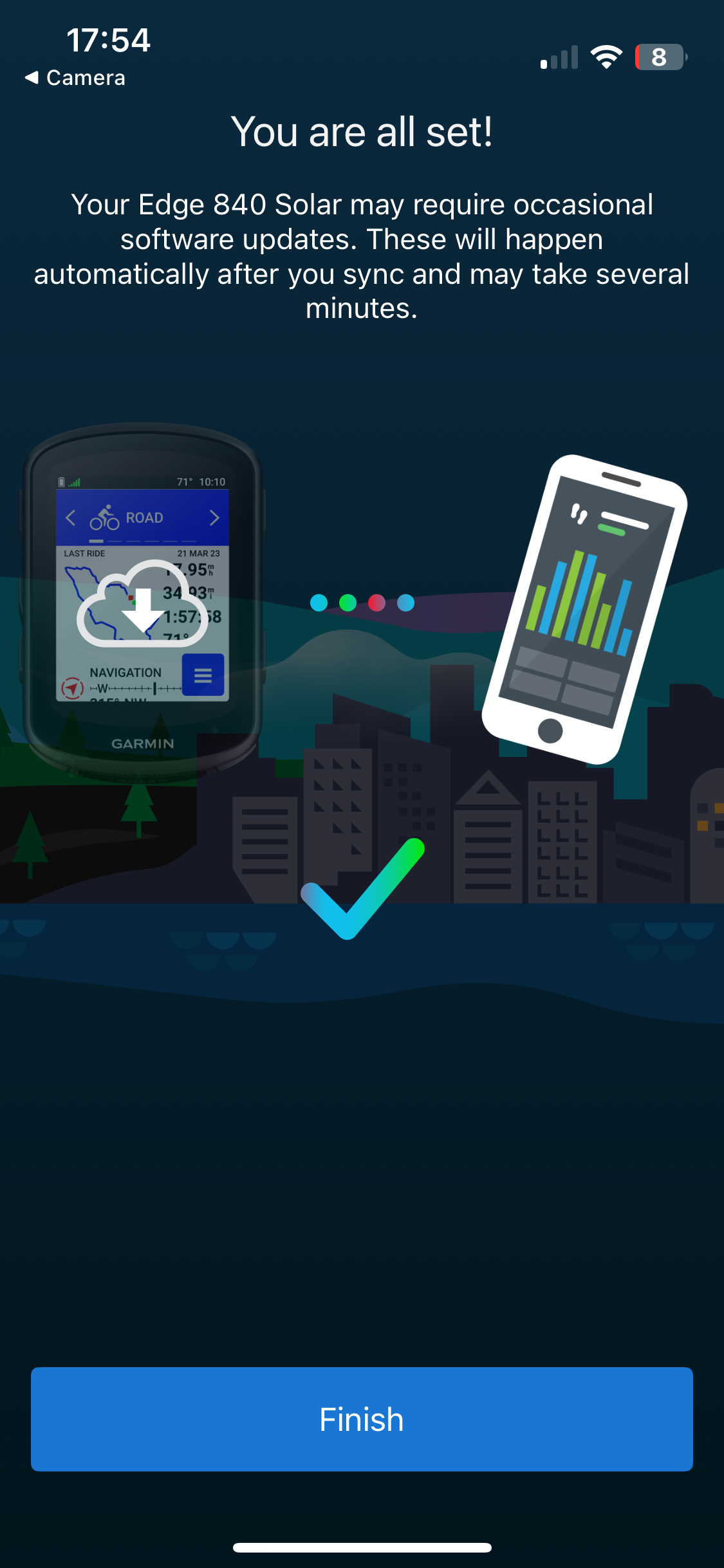
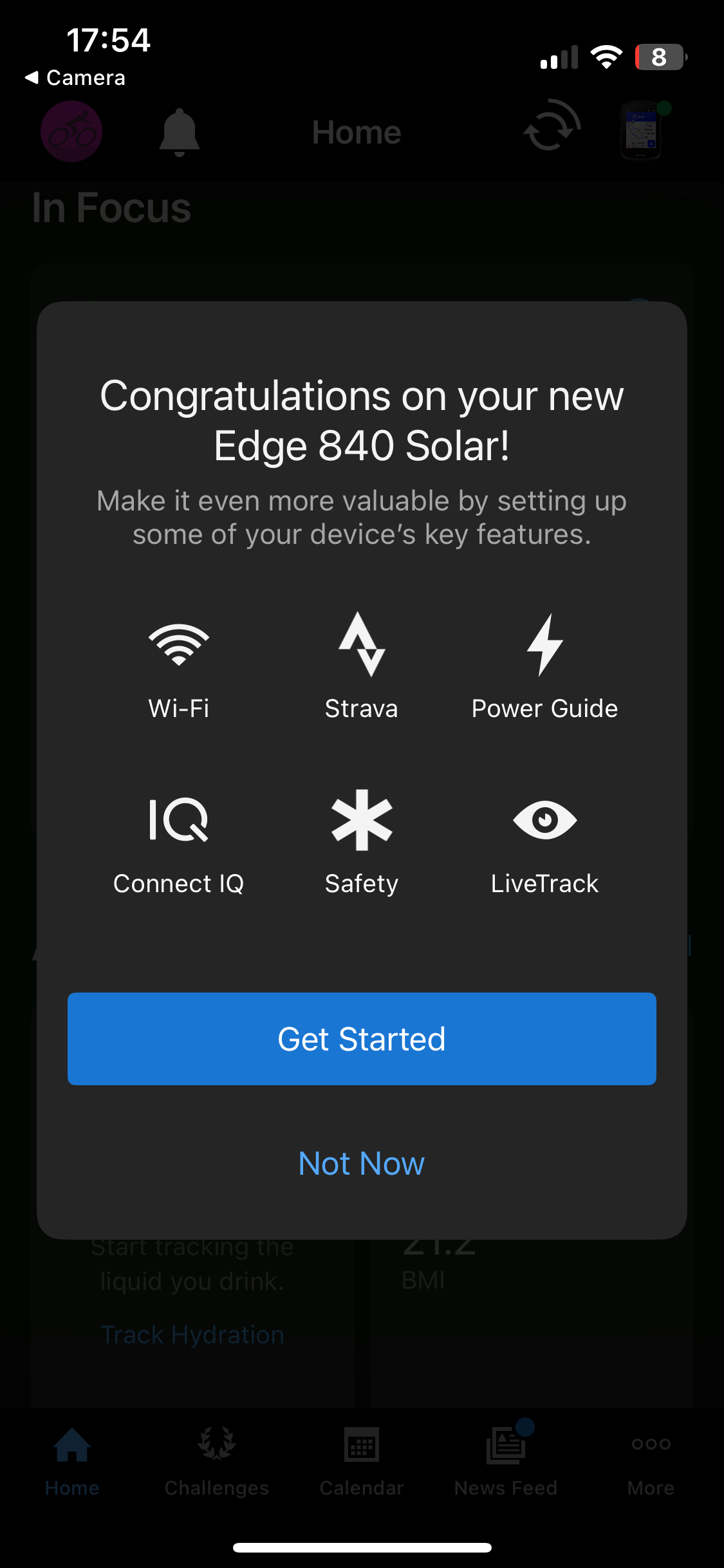
Some of the other standout features are Climb Pro which provides you with key climbing metrics on a specific data page for any climb. You can toggle this off, but it's really useful. Especially on an unknown climb on a trip or on unfamiliar terrain, it really comes into its own for me then. The big computer brands all have their own version of this now though.
There's music control, which is very good if you're listening away during a workout, and it's a novelty that's never lost on me. You can also report hazards, and be notified about busy roads or major potholes, thanks to other users flagging things. It's a nice extra safety feature, and I try to log potholes whenever I can.
I subscribe to the Trainer Road platform and app and do most of my structured workouts there, but you can import them to Garmin to do out on the road or connect to a smart trainer. On the topic of training, again there's a tonne packed into the 840 Solar. You can choose a training plan using Garmin Coach and buy into the Garmin platform generally and use the various metrics and tools on offer to get more specific and detailed about your training and fitness if this is your bag.
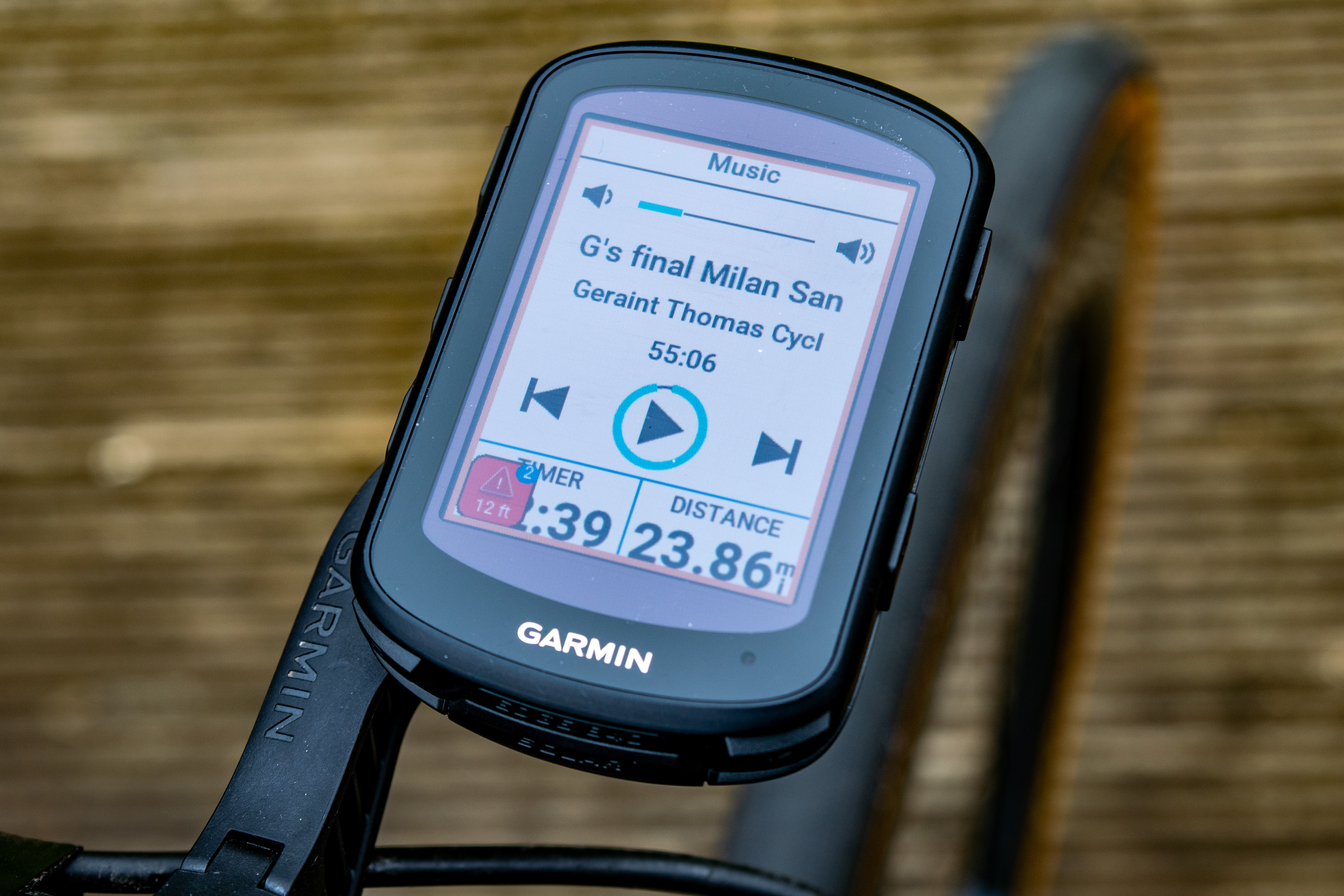
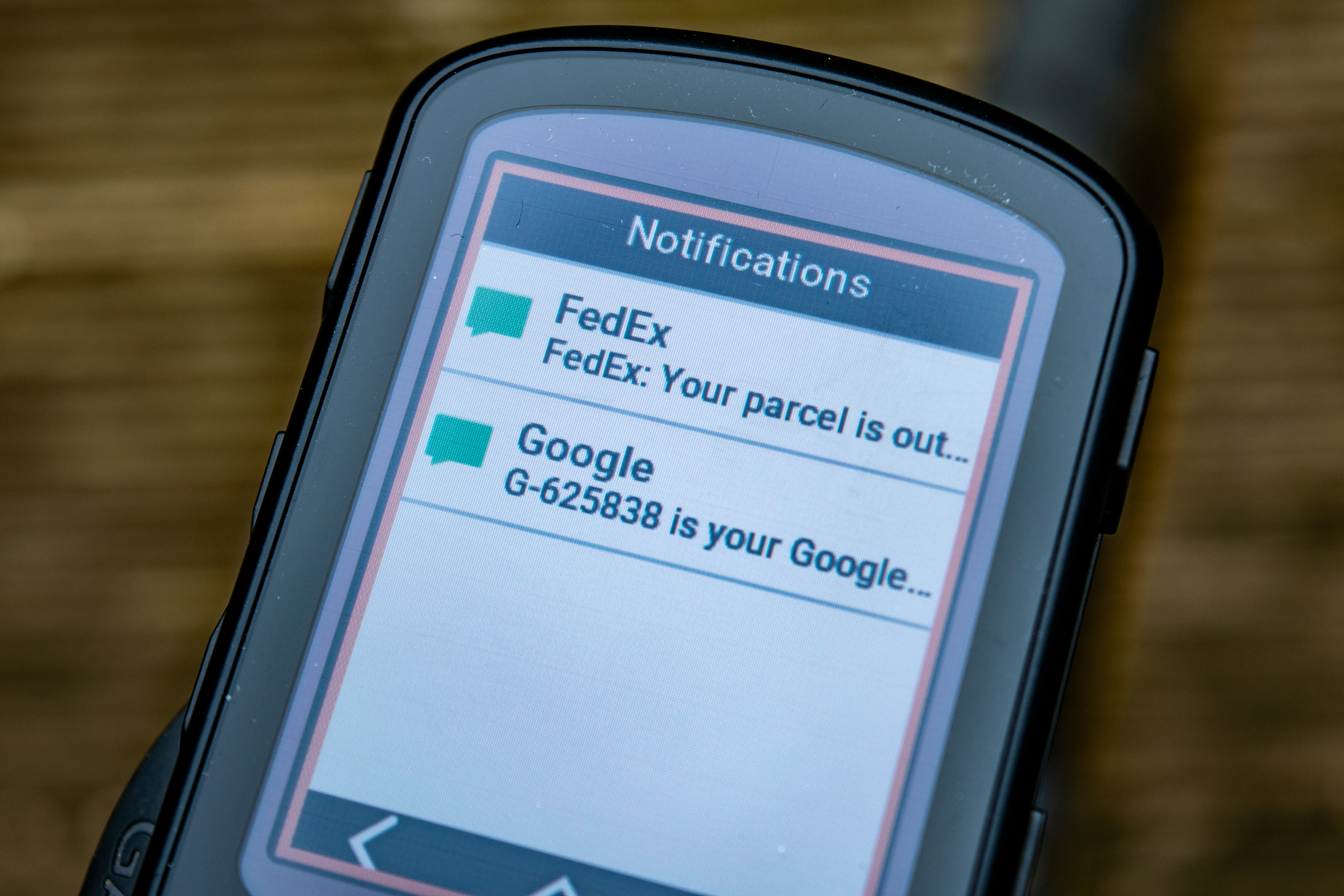
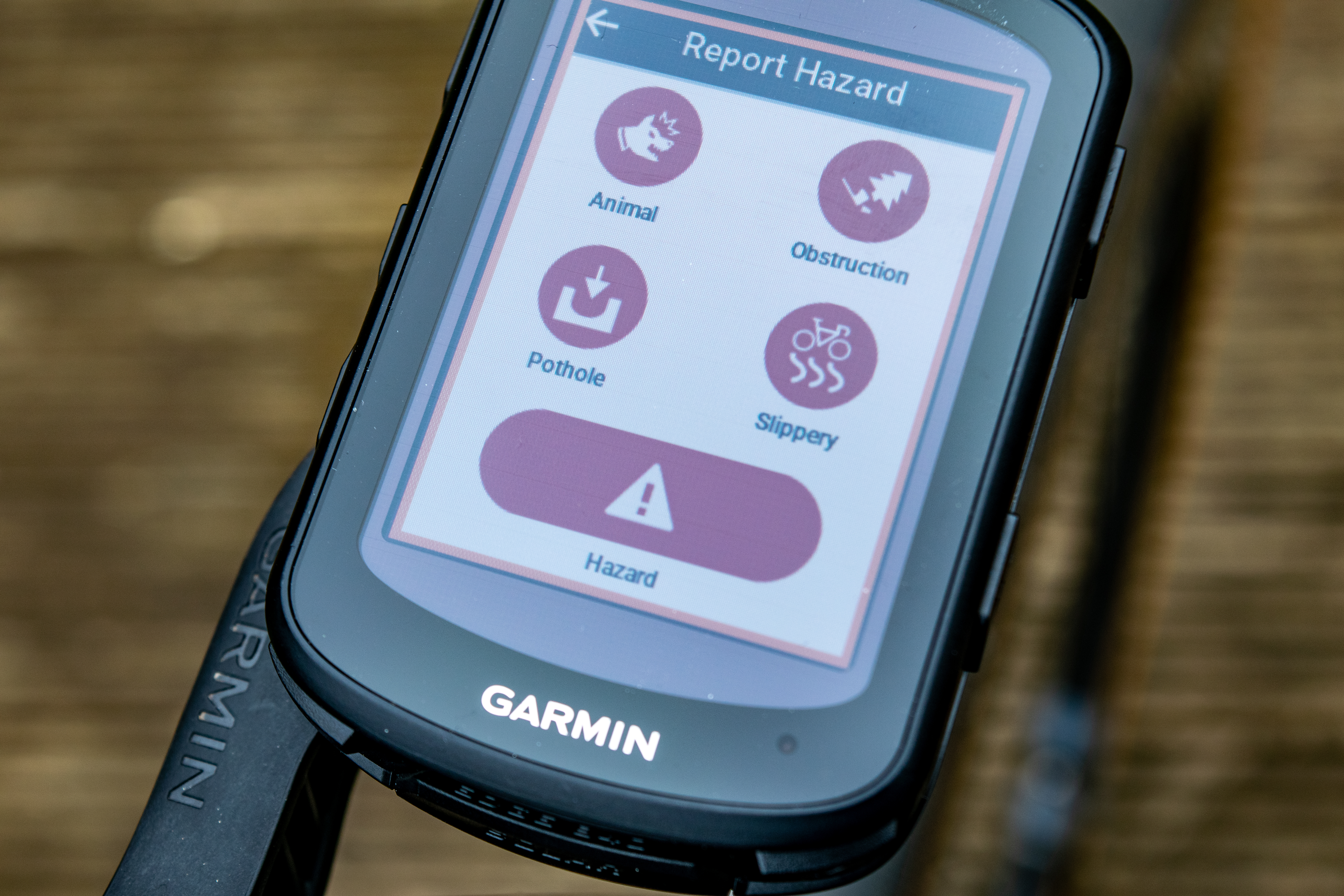
Performance
Overall, my experience has been very good with the 840 Solar, it's a powerful computer with tonnes of features that will be enough for nearly every cyclist I would have thought, and it's not huge, which is nice.
I’ve used mapping and routing on the computer in two countries, at home in England and in Italy for a recent press trip. For the Italy rides, I imported several GPX routes via Komoot and linked the app in Garmin Connet to my unit, which worked seamlessly. If you are a Komoot user, and want to take advantage of linking the two, it's easily done.
Routing has generally been very good. Solo rides on unfamiliar roads are the best test for a computer's navigation functions. I was completely alone on several rides on very quiet roads and gravel tracks but had no issues following any of the routes, tight turns here and there caught me out once or twice. But generally, you will not be let down following a route. You can also navigate to a chosen pin, or search for a point of interest. It's not as slick as the 1050, but it works well enough. Screen size was also fine for me, it's surprising how quickly you just adapt to whatever is on your bars. The Garmin took a few minutes to hook up with a GPS signal at the start of the first ride abroad which caused some frustration, but once we got rolling, everything worked very well. I also updated the Europe maps before I went, which took a few minutes so do this in good time before your first ride if you travel with a unit.
The solar charging feature hasn't been a flop for me, but it just hasn't factored into things much. It's only March so there hasn't been tonnes of bright sunshine in my part of the world, but this is Britain. On my rides, the unit has gained a few minutes of extra charge over the course of a ride. It's going to depend on Lux levels, which is how light intensity is measured. Compared to plugging in a USB-C charger at home, it's been a non-event. For me, I'm not sure I'd ride long enough or in bright enough conditions generally to really benefit from the built-in solar charging tech on offer.
If you do want to explore the idea of solar charging for your computer, check out the Coros Dura, which promises a very long battery life paired with solar tech. Food for thought, you can also buy a Garmin Edge charging back via the brand's website to boost the battery even further.
That said, if you live in a very hot, sunny place, you may benefit far more from the technology and shave minutes off or even eliminate a lot of your plug-in charging time, you will just have to weigh up the cost. There's also a common sense point to be made, about leaving the unit out in scorching heat to charge for hours. If it's getting really hot, show the 840 some love and let it cool off so you don't fry it.
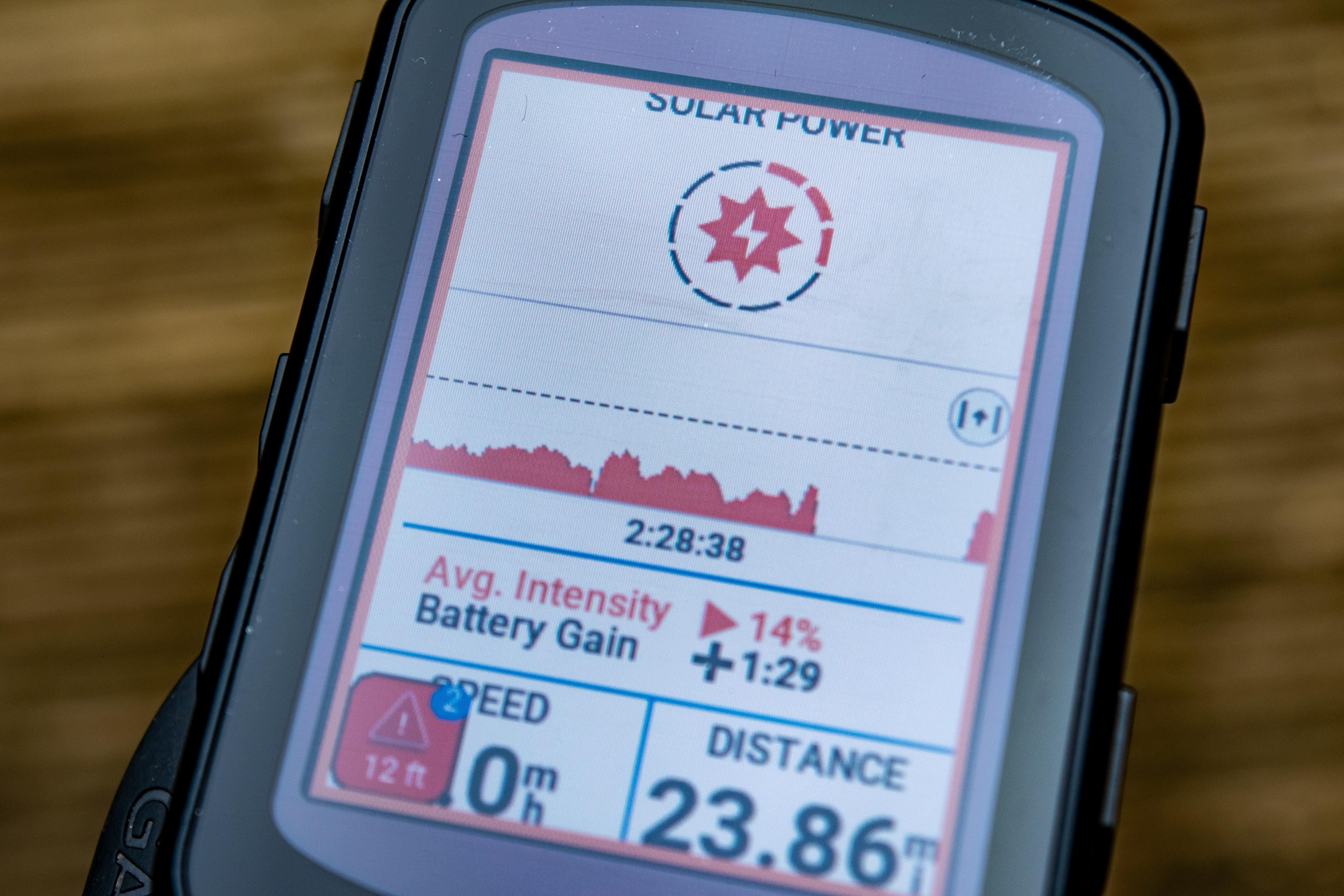
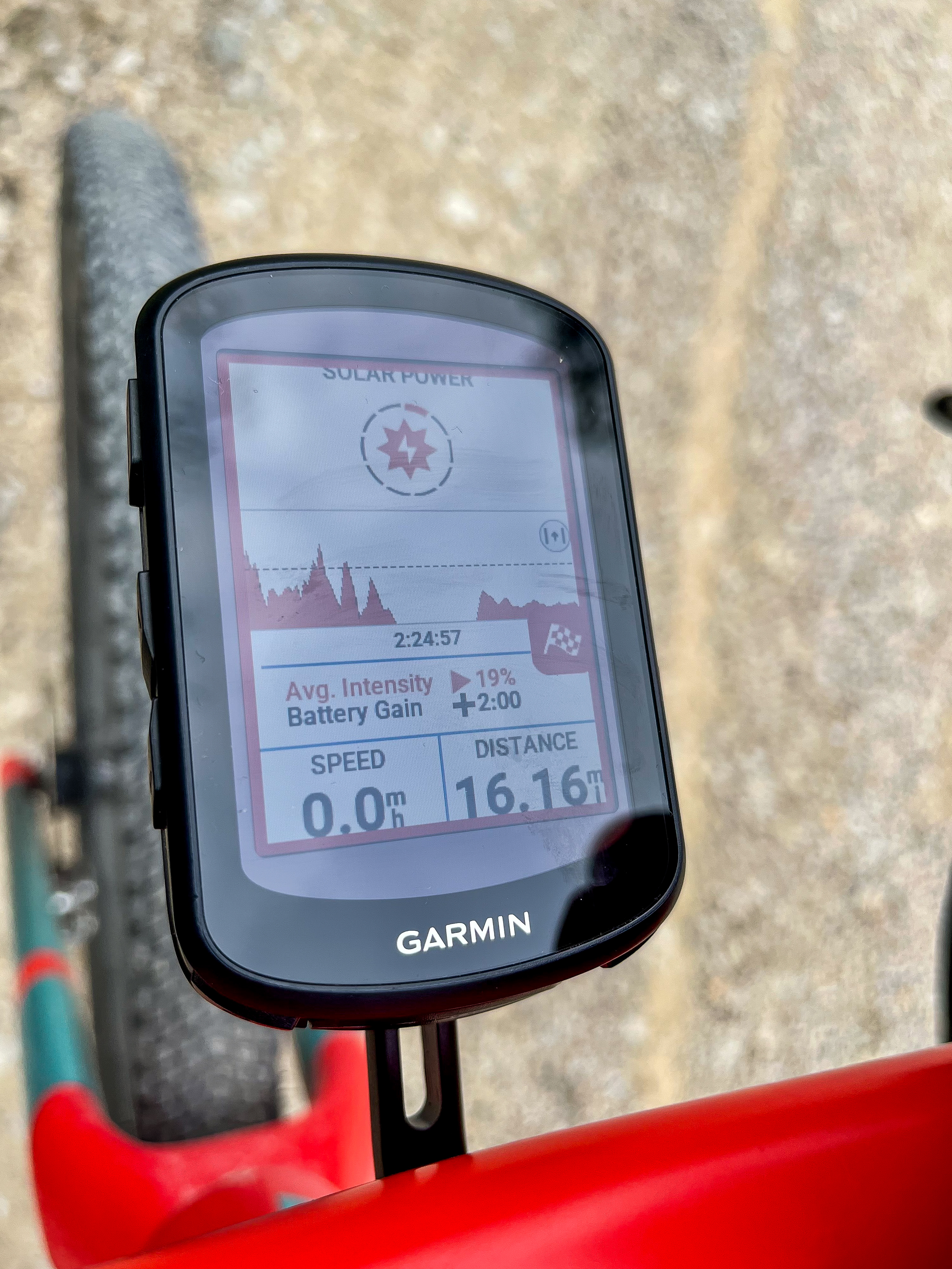
Elsewhere it's easy to live with the Edge 840 Solar. I turned off a few of the default data screens - there are just too many for me and it takes me too long to scroll through them all during a ride. Things like elevation for example I toggle off. I also turned off the auto lap setting which the unit came with, which lapped my rides every five miles or so for some reason.
Every sensor has paired instantly with the unit, from heart rate monitors to various power meters, and everything has behaved exactly as it should, which is reassuring because this is an expensive bit of kit. I could go on, but high-end modern computers are just powerhouses now. One thing I do notice, is the slightly less bright and crisp screen resolution compared to the Karoo and Edge 1050, and I have been riding with it on max screen brightness, but this unit has been out for longer, so I think that's fair enough. If you do want the latest and greatest screen resolution, and they are very good, look at one of those units.
This isn't a brand-new unit, and it sits within the Garmin range, so it's probably important to outline why you might want to choose this unit over the 540, or jump up to the Edge 1040 solar. The units share a lot of the same features, you aren't really losing out in having one over the other. The Edge 1050 gains a bell and contactless payment but is that even a deal breaker? I'm not so sure.
The 540 doesn't have a touchscreen, so rule that out if a touchscreen appeals to you, the 840 and 1040 have both buttons and a touchscreen. If battery and specifically map storage capacity are key factors in the kind of cycling you do, the 1040 solar has a bigger screen, memory, and longer claimed battery life and solar charging capacity than the 840 solar.
Value
This is still an expensive piece of hardware at $499.99 / £449.99 / €549.99. It also appears to be the same price as the Hammerhead Karoo, at least in the UK. A tough head-to-head for sure. If you really prioritise navigation, I would recommend the Karoo. It's also around $100 more than the very capable Wahoo Roam, though the 840 Solar has the Roam beaten on user interface and features I think.
A key point for me here is if you don’t live somewhere particularly bright or sunny, like me, living in Britain, I’d say dispense with the solar charging feature. This is the first solar computer I have ever used, and I (unrealistically) expected huge charging gains.
In reality, the battery time gains have been small, even under bright, sunny skies in Italy, I didn’t receive big battery top-ups. When you can just plug in and charge after every ride, I’d personally save myself the extra cash and go for the standard 840 if I were choosing between the two.
Value-wise, I think the Solar is a good buy if you live somewhere, bright and sunny, and want to take advantage of everything that Garmin packs into a premium unit. If you live in Britain for example, ditch the solar feature. If you need just the core ride metrics and reliable mapping, there are more affordable options out there.
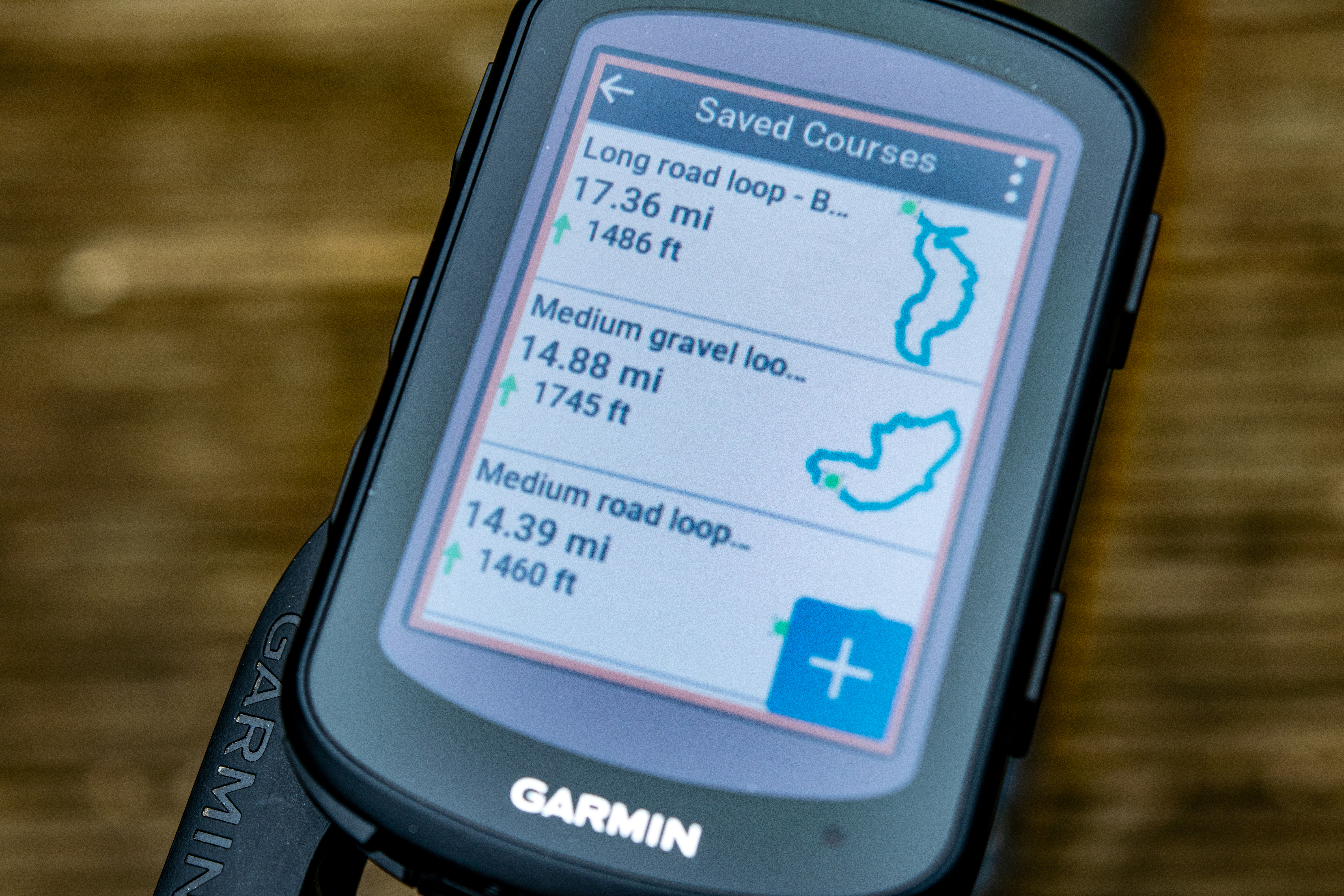
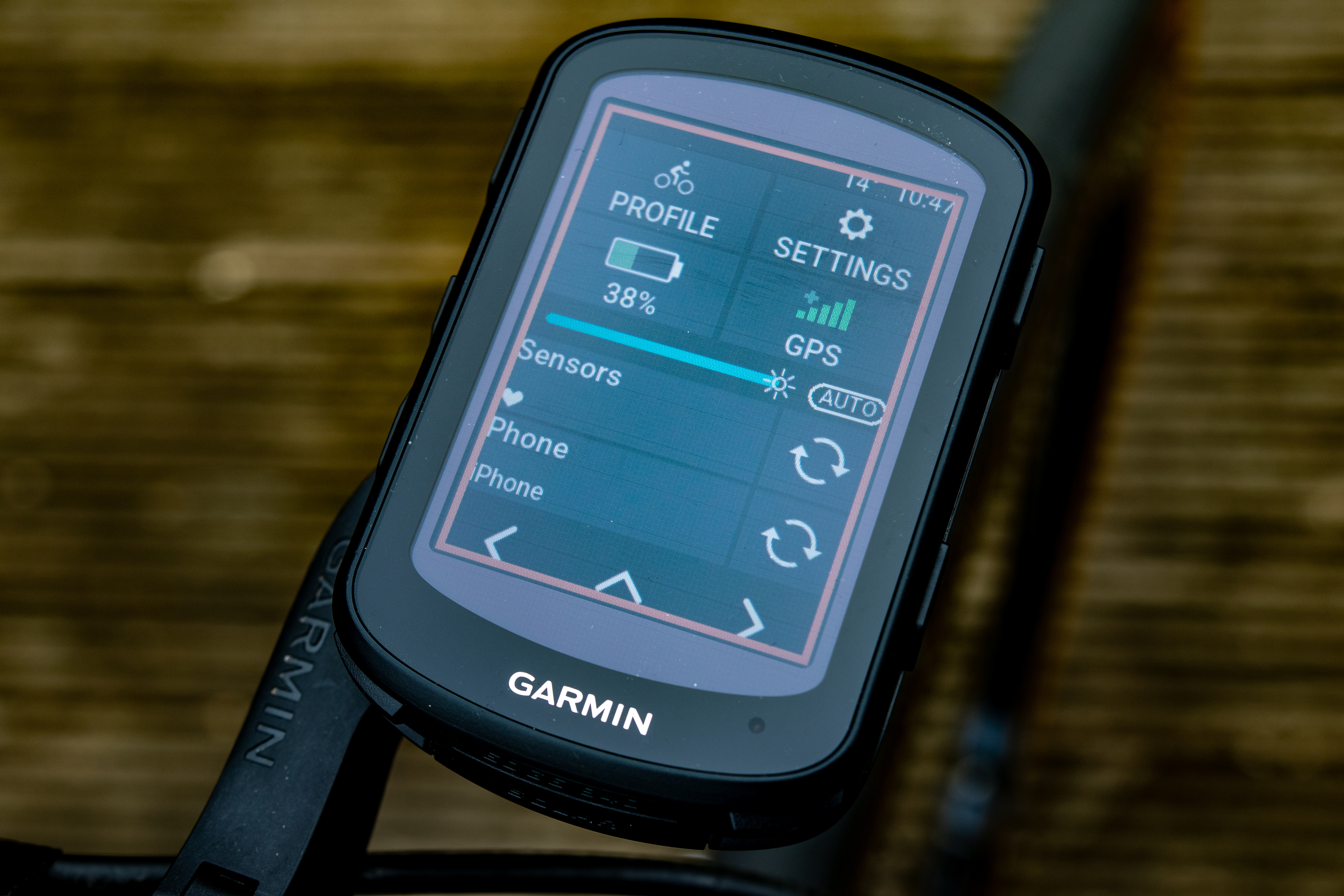
Verdict
The Edge 840 Solar is a really powerful, capable computer whichever way you slice it. With solid navigation, connectivity, and a tonne of features, too many for me if I'm being honest. The solar charging is a bit more specific, and I think I've explained who that will be most useful for.
Why go for the 840? One, if you want a more compact computer, this will fit the bill. It's not huge and doesn't take up tonnes of space. It gains a touschscreen over the 540, but doesn't have the battery life or memory of the 1040 Solar.
It's a computer that's packed with features in a more compact package. But I suspect if you are not riding for days at a time, or live somewhere where it's always bright and sunny. The non-solar version may be the better buy.
| Screen quality | Good, easy to see and adjustable. Now not quite as bright or crisp as the latest models | 8/10 |
| Navigation | Very good, easy to follow routing with nice prompts. Some may prefer a bigger screen | 8/10 |
| Connectivity | Very good, ticks all the boxes. | 9/10 |
| Battery life | Solid, not going to be an issue unless you are on a tour / audax or similar and need solar charging or a power bank | 8/10 |
| Value | A good buy if your bought into the Garmin world, or want to use and explore every feature, it's pretty packed, solar may not be useful for some riders | 7/10 |
| Total | Row 5 - Cell 1 | 40/50 |

Tom joined the Cyclingnews team in late 2022 as a tech writer. Despite having a degree in English Literature he has spent his entire working life in the cycling industry in one form or another. He has over 10 years of experience as a qualified mechanic, with the last five years before joining Cyclingnews being spent running an independent workshop. This means he is just as happy tinkering away in the garage as he is out on the road bike, and he isn’t afraid to pull a bike apart or get hands-on with it when testing to really see what it’s made of.
He has ridden and raced bikes from an early age up to a national level on the road and track, and has ridden and competed in most disciplines. He has a keen eye for pro-team tech and enjoys spotting new or interesting components in the wild. During his time at Cyclingnews, Tom has already interviewed some of the sport's biggest names including Mathieu van der Poel, Tadej Pogačar and Alberto Contador. He's also covered various launches from brands such as Pinarello, Ridley, Specialized and more, tackled the Roubaix Challenge sportive aboard his own rim-brake Cannondale SuperSix Evo, tested over 20 aero helmets in the wind tunnel, and has created helpful in-depth buying advice relating to countless categories from torque wrenches to winter clothing.
You must confirm your public display name before commenting
Please logout and then login again, you will then be prompted to enter your display name.
